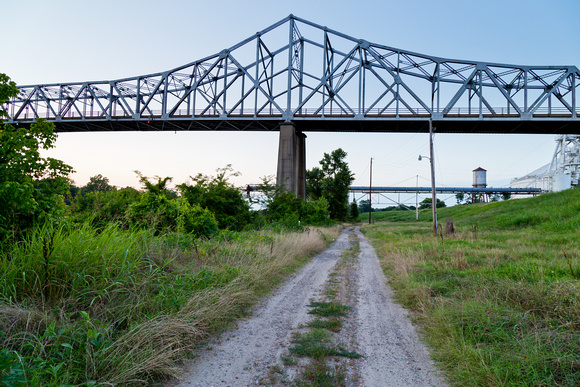Highway 79 Bridge, Clarendon, Monroe County.
Designing a bridge over the White River at Clarendon was a difficult task in the early 20th century. Not only did you have to cross the White River (which was usually flooded), you would also have to cross wetlands and an oxbow lake. But the Highway 79 bridge opened in 1931, which included a two-mile-long western approach that carried traffic high above the swampy terrain. The actual bridge over the White River was a double-span steel Warren truss on a two-lane reinforced concrete floor. The bridge replaced a ferry crossing, and carried the traffic of Hwy. 79, which used to be known as the Military Road and was the first ldquo;all-weatherrdquo; road that connected Little Rock and Memphis. The bridge was similar to two other bridges over the White River in Augusta and Newport (today, only the Newport one remains. But it too will probably be torn down as soon as the construction on its replacement is completed).br/ br/In 2015, the Arkansas Highway and Transportation Department replaced the historic bridge with a new, but bland and nondescript crossing over the White River. Local efforts were quickly made to save the bridge, resulting in a five-year battle with the state. The goal was to turn the bridge into a pedestrian and bicycle crossing, which could provide a tourism boost to Clarendon and the surrounding area. The Mayor of Clarendon argued that it was actually cheaper to preserve the bridge than it would be to destroy it (by about $5 million). The fight to save the bridge went all the way to the Arkansas Supreme Court, but the bridge defenders lost their case. Sadly, the historic span was destroyed in a flash of dynamite on November 19, 2019. br/br/ br/ Taken: 2016


